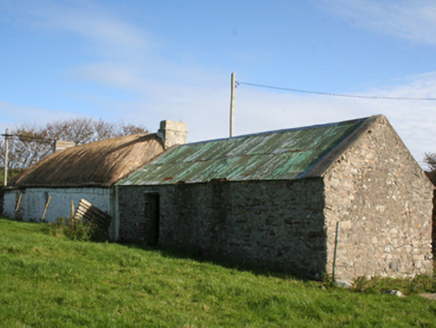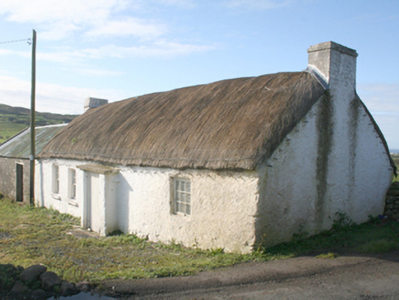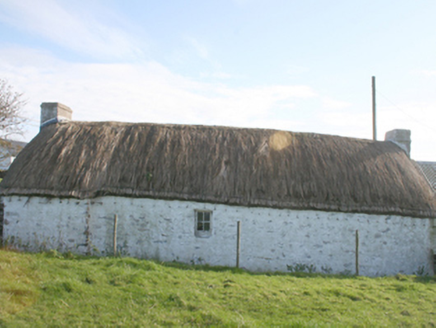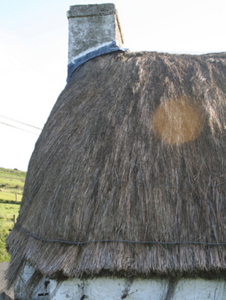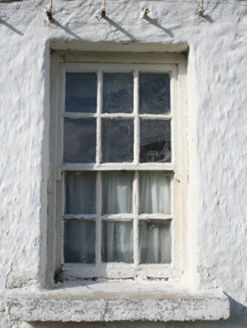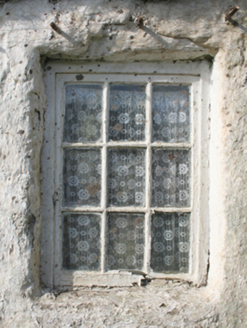Survey Data
Reg No
40900210
Rating
Regional
Categories of Special Interest
Architectural, Technical
Original Use
House
In Use As
House
Date
1800 - 1840
Coordinates
244201, 455210
Date Recorded
14/10/2008
Date Updated
--/--/--
Description
Detached four-bay single-storey vernacular house, built c. 1820, having flat-roofed windbreak porch to front, bed outshot to rear, and two-bay outbuilding attached to west gable. Round pitched flax thatched roof with latticed wire restraint and iron pegs, remnant limewash to concrete brick chimneystack to north gable and remnant limewashed render to rubble stone chimneystack to south gable; corrugated roof with concrete gable coping to attached outbuilding. Limewashed rendered rubble stone walls. Square-headed window openings with concrete sills, and with six-over-six pane horned timber sliding sash window and nine light fixed-frame windows to front. Square-headed door opening to porch having timber sheeted door. Set in own grounds to the north-west of Malin town. Bound on road-frontage by rubble stone wall and hedging with ruined single-bay single-storey rubble stone outbuilding to the south-east.
Appraisal
This appealing and relatively intact example of a vernacular house retains its early form and character, and is an appealing feature in the scenic rural landscape to the north-west of Malin town. Its integrity is enhanced by the retention of much of its salient fabric including timber sliding sash windows and battened timber door. Of particular interest in the survival of the thatch roof, although recently renewed, which is now sadly becoming increasingly rare in Donegal. The rounded roof is a typical feature of thatched houses located close to the sea in exposed areas in the north-west of Ireland, while the pegs to the eaves were used to tie ropes (and sometimes nets) over the roof to secure it against the prevailing winds, as is the case here at Ballykenny. Modest in scale, it exhibits the simple and functional form of vernacular building in Ireland. It retains some characteristic features of the vernacular tradition to the area, including a bed outshot to the rear, windbreak porch, and a largely blank rear elevation. The form of this building, having chimneystacks to the gable ends and a central doorway to the original building, suggests that this building is of the ‘direct entry’ type that is characteristic of the vernacular tradition in north-west Ireland. The attached rubble stone outbuilding to site adds to the context and setting, and help to create a long low vernacular composition of some rustic and visual appeal. This house represents a fine surviving example of a once ubiquitous building type in the rural Irish countryside, and is a valuable addition to the vernacular heritage of County Donegal.
